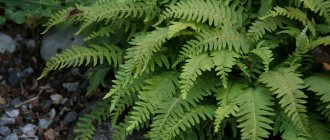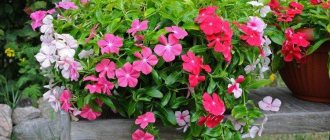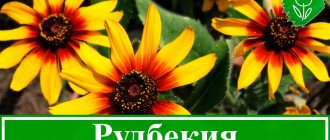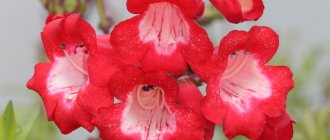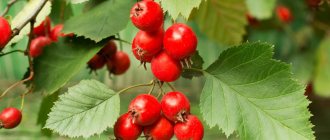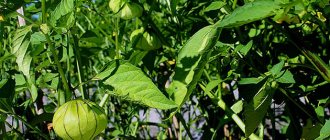Description
A total of 24 species of perennial ferns are united by the genus Woodwardia from the Derbyanaceae family.
Millions of years ago, their range covered almost the entire earth's surface. Nowadays, Woodwardias grow mainly in regions with a warm and humid climate. However, nature has awarded several species with frost resistance, thanks to which they have successfully adapted to existence in areas with very harsh winters. Depending on the species, the rhizomes are short ascending or long creeping. Woodwardia has double-pinnate fronds, the length of which varies from 30 cm to two meters. The strong petioles are often covered with scales at the base.
Only the emerging leaves are colored reddish-brown. As they mature they become dark or light green. Convex dotted lines run along both sides of the central vein. The original ornamentation of the leaf blades is due to the elongated sori.
Like all ferns, Woodwardia does not flower or produce seeds. But even without inflorescences, these plants are very popular among gardeners. Deciduous species from spring to late autumn, and evergreen species delight all year round with their lacy foliage, reminiscent of the plumage of fairy-tale birds.
2.Woodwardia - care at home
2.1. Temperature conditions
Likes moderately warm or warm content. Regular room temperature will do. In winter, you can lower the temperature to 10° C. Does not tolerate cold drafts.
2.2.Lighting for ferns
From light shade to full shade. It is worth remembering that the better the lighting, the more often it is necessary to water the Woodwardia. In hot summer weather it needs good shading.
Care.
Prefers organically rich, well-moistened peat-based soil with good drainage.
Doesn't bloom.
2.8. Watering Woodwardia
Watering is frequent and plentiful; the soil should never dry out. In winter, slightly reduce the amount of water.
2.9.Transplant
As you grow. Young plants - annually in the spring in larger pots, large specimens every 2 - 3 years, or simply change the top layer of soil with fresh one.
2.10.Reproduction
Pieces of rhizome, each of which must have roots and leaves. Young offspring appearing at the ends of fronds.
2.11.Pests and diseases
Brown leaf tips indicate insufficient air humidity. Leaves wither and fall off when there is a lack of moisture.
Among the harmful insects, scale insects and aphids can attack the fern.
Insects - pests
| Insect name | Signs of infection | Control measures |
| Aphid | Sticky droplets appear on the leaf blades, the leaf blades curl and become deformed, tender buds and young leaves wither. Colonies of insects can be seen on the tips of shoots, buds or the underside of leaf blades. The flowers of plants affected by aphids may become deformed. | Folk methods: nettle infusion, decoction of rhubarb leaves, wormwood, soap solution, infusion of tobacco and dandelion, onion, marigold, yarrow, tansy, dusting with wood ash. Chemicals: Sulfur powders, treatment of green mass with green potassium soap without getting into the ground, Decis, Actellik, Fitoverm. |
| Scale insect and false scale insect | Sticky droplets on the leaves, small yellow spots on the surface of the leaf blades. When scale insects become widespread, they cause leaves to dry out and fall off. Flowers slow down their development | Folk methods of struggle. Spraying with soap and alcohol solution. Scale insect larvae do not like garlic infusion; they also use pyrethrum-based products. Chemicals. Fitoverm, Aktellik, Fufanon. |
- Aphid
- Shchitovka
Note.
Hydroponics.
You might also be interested in:
Growing
Woodwardia is content with minimal care. It can safely be counted among the representatives of the flora that grow on their own. A beautiful and unpretentious plant can be grown as a tapeworm or “fit” into a flower arrangement.
The luxurious fronds of Woodwardia enliven the darkest corner of the garden and decorate the coastal area of the reservoir. Species with short rhizomes get along well with perennial plants. For long-rhizome Woodwardias, it is advisable to select annuals as neighbors: Marigolds or Asters.
If Woodwardia is kept in a container, annual transfer to a larger container is required. The procedure is recommended to be carried out in the spring. At the same time, you can propagate the plant by dividing the bush into 2-3 parts. In addition, to increase the flower collection, it is permissible to use brood buds. They are carefully separated along with the frond segment and rooted in loose soil.
Reproduction by spores is considered the most labor-intensive. A shallow and wide container, for example a Petri dish, is filled with a substrate with the addition of peat and perlite. The mixture must be scalded with boiling water. After cooling, the spores are poured onto the surface, slightly moistened and, covered with glass, transferred to a warm place. Spores germinate in 2–2.5 months. The coating must be removed, and when the first leaves form, pick immediately.
Reproduction
The most favorable time for transplanting and dividing is the onset of spring. Woodwardia is propagated by dividing the rhizome during transplantation, cutting it into pieces with a sharp knife, each of which has a rhizome and a growing point. Brood buds - they are cut off with part of the leaf and rooted in a loose substrate. To speed up rooting, cover the pot with a glass jar.
Reproduction by spores
How to sow woodwardia with spores
- You can try to propagate Woodwardia by spores that are located on the back of the leaf.
- They are sown in sterile soil and maintained at constant humidity.
- The sprouts will not appear soon and grow very slowly; it is necessary to create a greenhouse effect by covering the container with the spores to be germinated with glass or film.
- When the sprouts rise, they are planted in separate containers and cared for in the usual way.
- At first, you can create conditions of high humidity by placing the plants in a large aquarium, which is also covered.
First steps after purchase
When purchasing Woodwardia, it is better to choose a plant with a closed root system. It is advisable to purchase a specimen with already deployed fronds. The plant tolerates transportation painlessly. It is advisable to plant it in open ground in the spring. In this case, it will have time to adapt and gain strength for a successful winter.
It is necessary to add a little peat to the prepared hole to acidify the soil. When planting, the bush should not be buried. It is important to leave a small hole for subsequent watering. The first watering is carried out immediately.
It is also possible to grow Woodwardia from rhizomes. It should be strong, without signs of rotting. The length of the segment is not as important as the presence of roots and at least one growth bud.
Shade-loving woodwardia. A real fern for your garden
The fern is a true symbol of the forest. Ferns are the oldest representatives of our planet. Since time immemorial, they have attracted people with their mysterious beauty. Various legends and mystical properties were attributed to them. Do you want to place one of the representatives of this genus in your garden? Woodwardia is a rare plant, but a striking representative of the fern family. This plant is perfect for creating a natural landscape design.
It’s worth saying right away that the main advantage of Woodwardia is that it gets along well even in wetlands. It is shade-loving, which allows it to fill in dark areas in the garden. Currently, woodwardia is widely used in landscape design.
Secrets of success
Woodwardia is an extremely easy plant to grow. It feels most comfortable in partial shade and shaded areas. If the area is brightly lit, you can plant Woodwardia in the shade of a tall tree.
This representative of the flora likes acidic soils. If the pH value does not meet the requirements of the plant, the soil must be acidified.
Woodwardia does not tolerate drought at all. The soil must be constantly moist. From spring to autumn, plants should be watered regularly. However, when the shores of reservoirs become the place of growth, the need for the procedure disappears.
Woodwardia does not need feeding. It is permissible to apply a minimum portion of complex mineral or organic fertilizers several times during the summer months.
In landscape design
Today, conifers are used almost everywhere in landscape compositions.
They can be seen in parks and private areas. Thuja Woodwardi (life tree) occupies an honorable place among the representatives of its genus. Thanks to its impressive appearance (compactness, bright greenery), as well as ease of cultivation (resistance to frost, drought, diseases and pests), the plant is a frequent participant in design compositions. Check out the thuja occidentalis variety Pyramidalis Compacta.
Hedge
Recently, the use of thuja to create living fences in garden plots has become increasingly popular. The tree of life is suitable for obtaining a low hedge of bright green color, which will please the eye all year round. Thanks to the thick dense needles, a very impressive composition is obtained. Thuja of this variety can be used for planting along walls and paths. Woodwardies are also planted near other, taller trees, which creates the effect of a natural landscape.
Compositions
The Alpine slide is a composition that imitates a mountainous area. One or more stones are installed in its center. Next comes the slope, where small shrubs and flowers are usually planted. Western Woodwardii can perfectly coexist with other conifers on alpine hills or in the garden. This type is usually combined with brightly colored flowers (roses, irises, gerberas). Gardeners often create beautiful flower beds with their own hands. Dwarf thuja is a good addition to a traditional flower garden.
Did you know? The homeland of thuja is considered to be North America, or more precisely, the regions bordering the USA and Canada. Currently, five main types of plants are known: Korean thuja, western thuja, giant thuja, Japanese thuja and Sichuan thuja.
In pots on balconies or verandas
The tree of life is also very convenient to grow on balconies and low-slope roofs. Thuja can be purchased in a tub or pot (this should be done from trusted sellers). It is used to decorate a veranda, a hall, or is placed at the entrance to a building. You can also place tubs with thuja in different places on the site, changing the location of the tree at the request of the gardener.
Possible difficulties
The depressed state of Woodwardia is the result of insufficient watering and/or excessive lighting. It is necessary to keep the soil constantly moist, as well as provide the plant with protection from sunlight.
If the tips of the leaf blades turn yellow and dry out, the reason is probably that the air is too dry. Regular spraying will help cope with the problem.
Very rarely, Woodwardia is attacked by Shield.
You can get rid of timely detected pests by wiping the leaf blades with a soap solution. If gentle measures do not give the expected effect, you will have to use insecticides. The most effective drugs are presented on the website in the “Medicines” section. Editorial team LePlants.ru
Pests and diseases
Woodwardia is quite resistant to pests. Among the diseases, non-infectious ones can appear, which arise when the rules of plant care are violated.
If the edges of the leaves curl and dry out, this indicates low air humidity or poor watering. Adjust these indicators and Woodwardia will live a full life again.
In addition, you can diversify your home collection with leafy and blechnum ferns.
And for the most curious, we invite you to watch the video about Woodwardia
Woodwardia in landscape design
In any garden there is a shady corner, with which the problem arises from year to year: what to plant on it? If you choose from perennials, coniferous trees and shrubs immediately come to mind. They require virtually no maintenance and are not affected by pests. Their only drawback is that they grow slowly.
Unpretentious annuals that tolerate shading are hard to remember right away.
What to do in such a situation? Pay attention to Woodwardia, which will become a real salvation for your flower garden
Woodwardia is an unpretentious plant from the fern family. Thanks to the specific leaves-fronds, it has a rather attractive appearance. Yes, it does not bloom, but this beautiful decorative foliage plant will delight your eye with its lush greenery until late autumn.
In our latitudes, two types of Woodwardia are grown: virginia (photo 1) and cellular (photo 2). Both species are among the largest representatives of ferns. The length of their leaves exceeds 1 meter.
An absolutely undemanding perennial that will adapt to any living conditions. He doesn't need feeding. Watering must be done in a timely manner, constantly ensuring that the soil is moist. This way you can recreate the natural habitat of ferns in the humid forests of Southern Europe and the mountains of North America.
Photo 1. Woodwardia virginiana
It does not require preparation for winter - the plant can withstand severe frosts without consequences. As a last resort, to be on the safe side, you can cover the bushes with fallen leaves for the winter.
When planting, select the most shaded place on the site. Instead of fertilizers, you need to add a little peat to acidify the soil. It is necessary to plant the bush without deepening, leaving a small hole for watering.
In landscape design, Woodwardia is seen in single plantings, acting as a solitary plant.
Photo 2. Woodwardia cellularis
It looks great in a Japanese garden framed by stone mounds, and the huge leaves go well with almost any conifer. For example, its emerald green color will stand out even more against the background of yellow-green thuja.
Considering the need of this fern for high humidity, woodwardia can be planted near artificial reservoirs. It easily tolerates swampy soil, so a slight deepening in the coastal zone will not harm it. In turn, the wide leaves will beautifully hang over the surface of the water.
If the site allows, you can try planting the plant at the foot of an alpine hill. In this case, it should be shaded by some large plant, for example, a spruce. The fresh green leaves go well with bright annuals: marigolds, asters, petunias.
This fern looks great in a duet with barberry. In autumn they will decorate your garden. Large, spreading green fronds against a background of small, burgundy-red leaves. This combination will not go unnoticed by your guests.
Summarize. Woodwardia is an excellent plant for shady areas. It looks great both individually and in group plantings. The best place for it would be a damp, swampy area. Don’t hesitate, but rather look for a place for this forest beauty.
Care
This variety has excellent survival rates, suffers little disease and tolerates harsh climatic conditions and poor soil. However, in order for the plant to delight with rich greenery and decorate the site all year round, you need to know and follow some rules for caring for it.
We recommend finding out how thuja blooms.
Watering and fertilizing
In the first month after rooting, you should especially monitor the soil moisture, because... drying out of the root system can lead to the death of the seedling. The plant needs to be watered once every 7 days with 10 liters of water. If the weather is particularly hot, watering is carried out more often. In order to determine the need for moisture, you need to dig the soil to the depth of the spade bayonet. If a lump of earth crumbles in your palm, it’s time to water. Sprinkling (pouring warm water from a watering can onto the crown) has a particularly beneficial effect on needles. The tree of life grows best in moist air conditions. In nature, it chooses places near bodies of water.
Video: caring for globular thuja
A tree under five years old should be watered once a week with 10 liters of water. Watering an adult plant is carried out once every 14 days. In case of drought, sprinkling is carried out before dawn and after sunset every day. Because When planting a life tree, fertile fertilized soil is used, this is enough for the first 24 months of growth. Starting from the third year after planting, thuja begins to be fed.
Important! The concentration and frequency of applied fertilizers should be observed, because Too much mineral content can cause the roots to burn and cause the death of the plant.
In spring (April) to increase green mass, use a solution of ammonium nitrate (1 tbsp.
l. per 10 liters of water). feeding
Also, once in July and August, you can fertilize the soil with a solution of ash (300 g per 10 l).
Pruning and shaping the bush
Thuja Woodwardii has a naturally dense, rounded crown. However, without care, the greens will be loose and the shape will not be ideal, sloppy. To ensure the most effective appearance, pruning is necessary.
It happens:
- sanitary;
- formative;
- rejuvenating.
During the warm season, the tree is pruned several times. The first procedure is sanitary. It is carried out after winter frosts (March), in order to remove dead, dry, frozen and damaged branches.
Shaping haircuts can be started when the average temperature per day is not lower than +10° C (April). Woodwardii is trimmed starting from the age of six, when it is actively growing green mass. Pruning the apical shoot gives the direction of growth to the horizontal. This will further allow you to form a perfect circle or oval. They also thin out the excessively thickened crown and branches growing inside the bush.
Anti-aging pruning is carried out on adult plants after 10 years of growth. Its goal is to prevent premature aging of wood. The rejuvenation procedure is carried out in the second half of November or early March. For Thuja Woodwardi, this requires cutting off 2/3 of the length of the branches. Indoor Woodwardie is pinched and pruned so that the tree remains dwarf (50–75 cm) and has the required shape.
Find out how to distinguish thuja from juniper.
When pruning, the following tools are used:
- Mechanical (secateurs, garden shears).
- Power tools (brush cutters of various sizes).
- Cordless (the same hedge trimmers, but powered by rechargeable batteries).
Shelter for the winter
An adult plant of the Woodwardii variety very well tolerates wintering in central Russia and does not require additional insulation. Young trees must be covered during frosts. This can be done using coniferous spruce branches or covering material that allows sunlight to pass through.
Important! For insulation, it is necessary to choose exclusively natural “breathable” material. Polyethylene cannot be used, because... the plant will not receive the necessary oxygen, which will lead to the development of diseases and possible death
the plant will not receive the necessary oxygen, which will lead to the development of diseases and possible death.
